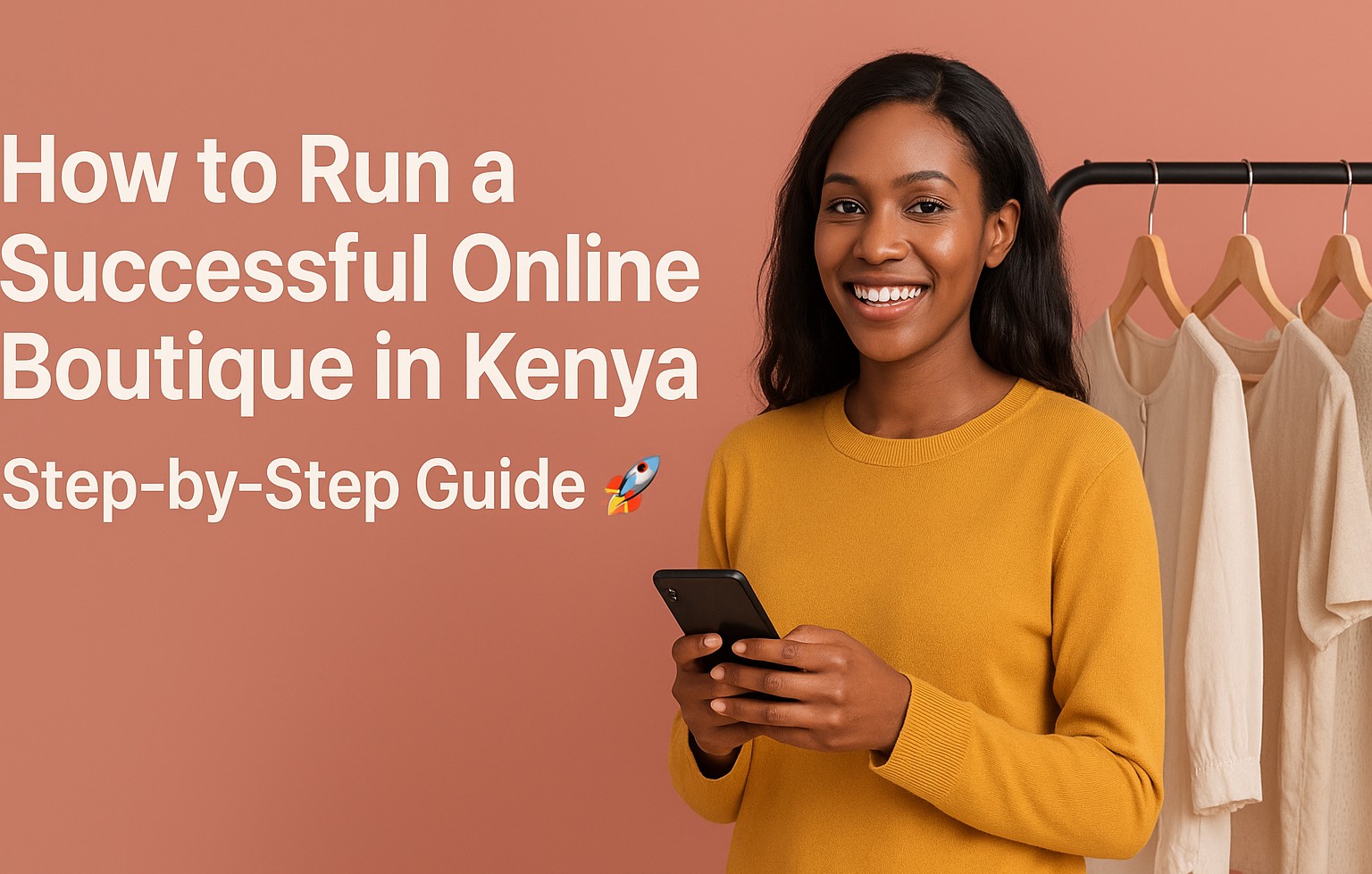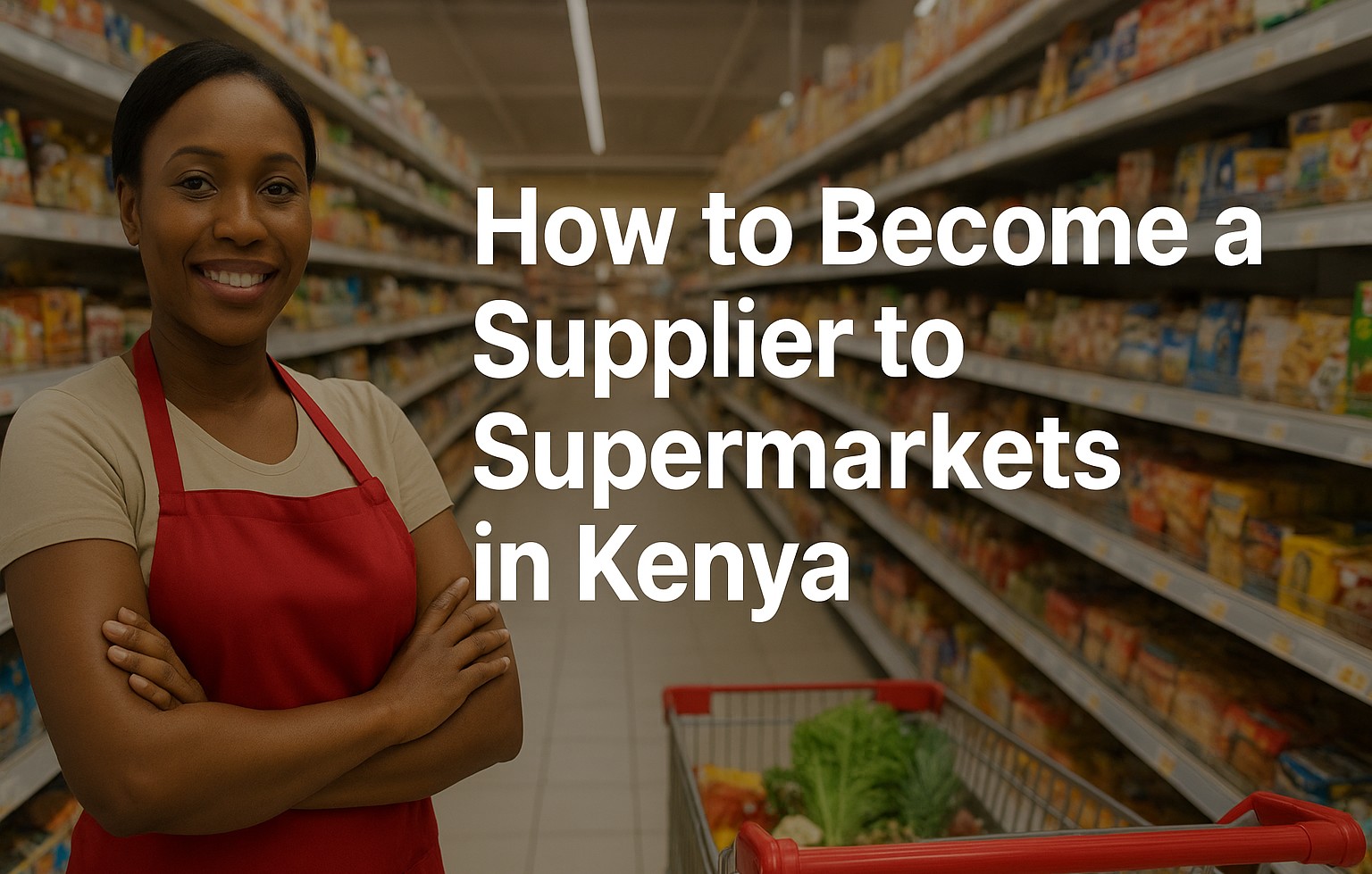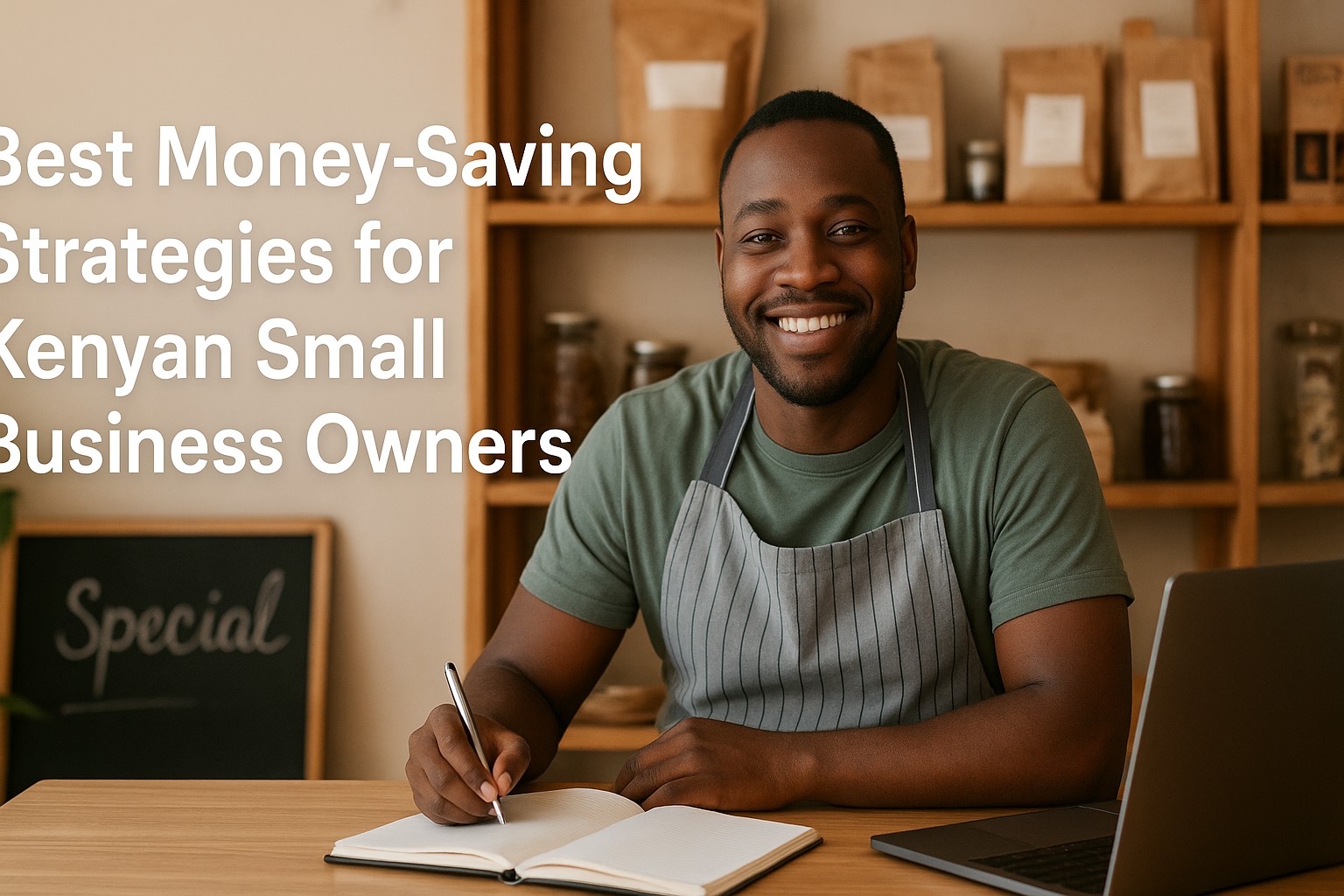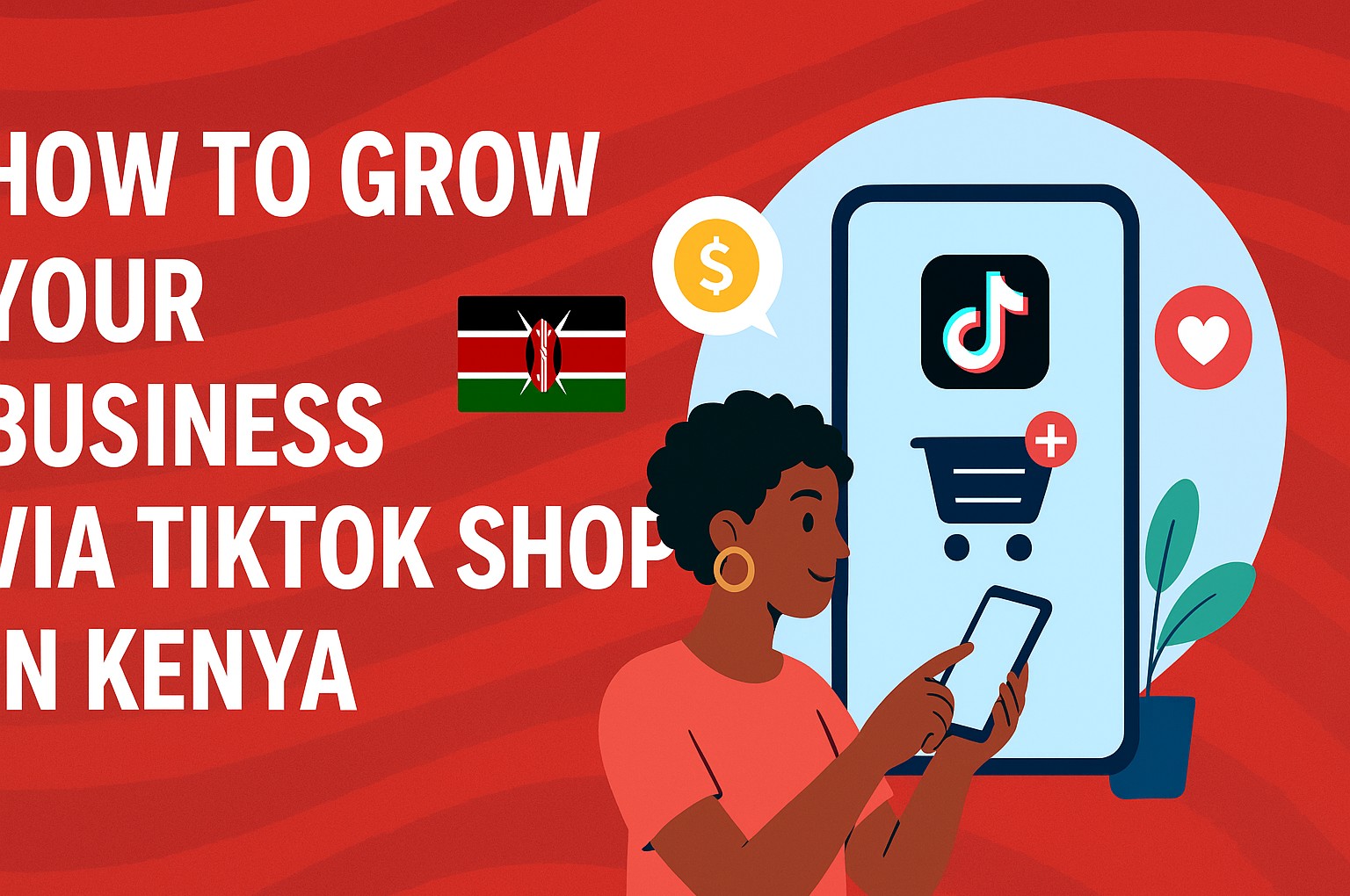

Titus Morebu
Author
How to Run a Successful Online Boutique in Kenya: Step-by-Step Guide 🚀
Build, launch, and scale a profitable online boutique in Kenya — with strategies for niche selection, logistics, trust, marketing, and growth in 2025.
Why an Online Boutique in Kenya Is a Smart Move in 2025
Kenya’s e-commerce market is soaring — projected to reach nearly $900 million in 2024, with millions of active online shoppers. Local demand is strongest in clothing, shoes, and beauty. E-commerce penetration is above regional average, fueled by mobile money adoption especially M-Pesa. (Trade and market data) You have a real opportunity if you execute well.
From Idea to Launch: Laying the Foundations
1. Choose a Profitable Niche & Target Audience 🎯
- Focus on underserved fashion segments: modest wear, sustainable/ethical clothing, maternity, plus-size, kids’ fashion.
- Validate demand: use Google Trends, social listening, competitor scans, local fashion groups.
- Define your ideal customer profile: age, income, style, values — so every decision is aligned.
2. Build a Solid Business Plan & Budget
Even a lean boutique needs foresight. Include:
- Startup costs: website, sample inventory, photography, branding, legal fees.
- Expected revenue & margins — fashion margins often around 40-60% if sourcing smartly.
- Cash flow forecast, breakeven analysis, growth plan (3-12 months).
3. Register & Legal Essentials in Kenya
- Register your business (sole proprietorship, LLC, etc.) with the Registrar of Companies.
- Apply for necessary permits or county trade license so you can operate legally.
- Understand tax obligations and comply (e.g. VAT if exceeding threshold).
- Draft policies: returns, privacy, terms & conditions — make them visible on your site.
Set Up Your Boutique Platform & Infrastructure
4. Choose the Right E-commerce Platform
Your platform is your engine. Consider:
- WooCommerce: Great flexibility if you like WordPress and control.
- Shopify: Simpler, secure, less tech overhead.
- Local or hybrid platforms: Some providers in Kenya offer built-in M-Pesa and local features to reduce friction.
5. Mobile-First Design & UX
More than 70–80% of Kenyan shoppers use mobile devices. Your store must:
- Load fast (<3 seconds on mobile).
- Have clear navigation, legible fonts, and a smooth checkout funnel.
- Display your contact info, physical address (if applicable), “about us” — builds trust.
6. Payment Options & Trust Signals
- Integrate M-Pesa, card payments, mobile wallets, and optionally cash on delivery (COD) to reduce friction.
- Show trust marks: SSL (HTTPS), verified payment logos, real reviews/testimonials.
- Clearly state return/exchange policies to reassure buyers.
7. Logistics & Inventory Strategy
How you get products to customers matters as much as getting orders:
- Local warehousing or vendor drop-shipping to reduce shipping time and costs.
- Partner with reliable couriers (e.g., local courier networks, established last-mile services).
- Offer pickup points (if relevant) to reduce delivery cost and expand reach.
- Maintain safety stock for fast movers; monitor inventory to avoid stockouts or overstock.
Product Presentation & Conversion Optimization
8. Photography & Product Descriptions
Visuals sell fashion:
- Use high-resolution, well-lit photos, multiple angles, on-model and flat lay shots.
- Write descriptive, benefit-oriented copy. Include size guide, material, care instructions.
- Create variation images (color, fabric swatches) and video or 360° view if possible.
9. Pricing & Promotions Strategy
Set prices smartly:
- Cost + markup model (e.g., product cost × 2.2–2.5 depending on margins).
- Offer bundle deals, volume discounts, seasonal or clearance promos.
- Use scarcity tactics (limited stock, limited time) carefully and authentically.
10. Cross-Selling, Upselling & Cart Optimization
- Recommend “Complete the Look” bundles or matching accessories.
- Show related items on product pages and cart pages.
- Use exit-intent popups or reminders to reduce cart abandonment (e.g., coupon prompts).
Growth & Customer Acquisition Strategies
11. SEO & Content Marketing
- Create blog content around fashion trends, styling tips localized to Kenya.
- Optimize product pages (title tags, meta descriptions, alt text, keywords like “women’s dress Kenya”).
- Internal linking structure to guide Google and users across similar collections.
- Link out to trustworthy high-authority sources (fashion education sites, relevant government, Wikipedia) in blog posts — opens in new tabs.
12. Social Media, Influencers & Community Building
Social is key in fashion:
- Leverage Instagram, TikTok, Facebook: reels, behind-the-scenes, styling videos.
- Collaborate with micro-influencers whose followers align with your niche.
- Engage your audience: polls, UGC campaigns, giveaways, styling challenges.
- Encourage satisfied customers to share photos and testimonials.
13. Paid Advertising & Retargeting
- Run targeted ads on Facebook, Instagram, and Google Shopping for Kenya audiences.
- Use retargeting to bring back visitors who viewed products but didn’t purchase.
- Track conversions using analytics and adjust spend based on ROI.
14. Email Marketing & SMS Campaigns
- Capture emails via popups, discount offers, blog opt-ins.
- Send welcome sequences, personalized product recommendations, and cart abandonment reminders.
- Use SMS campaigns (with consent) — Kenya has high mobile engagement.
Retention, Scaling & Optimization
15. Customer Service & After-Sales Experience
- Offer fast responses (chat, WhatsApp, email). Great service builds repeat buyers.
- Track returns and exchanges — refine sizing charts or quality issues accordingly.
- Introduce loyalty programs, referral incentives, VIP offers.
16. Monitor Metrics & Iterate
Use analytics to decide where to invest next:
- Key metrics: conversion rate, average order value (AOV), repeat purchase rate, customer acquisition cost (CAC).
- A/B test layouts, call-to-actions, pricing options.
- Regularly audit SEO, site speed, and user experience.
17. Diversify Sales Channels & Expand
- Sell on marketplaces (Jumia, Kilimall, Facebook Shop, Jiji) to boost visibility.
- Use offline pop-up events or trunk shows to build brand and trust.
- Add related product lines (accessories, footwear, beauty) once your brand is trusted.
Challenges & How to Mitigate Them
- Trust & Fraud: Low trust is common — mitigate by secure payments, clear returns, reviews, contact transparency.
- Logistics Delays: Use multiple courier partners, buffer delivery timelines, communicate clearly.
- Cost of Acquisition: Ad costs can grow. Focus on organic channels (SEO, UGC) to balance.
- Inventory Risk: Start small, use test runs, and avoid overcommitting to new designs until validated.
Conclusion & Next Steps
Running a successful online boutique in Kenya is achievable with the right foundation, consistent execution, and customer focus. Start lean, learn fast, and always listen to your customers. Over time, your boutique can evolve from a side hustle into a thriving fashion brand.
Ready to make this your success story? Start executing one area today — whether it’s choosing your niche, setting up your store, or posting your first social reel. The real momentum begins with small steps done well.
Gallery

Related Articles
3 articles
How to Become a Supplier to Supermarkets in Kenya – A Step-by-Step Guide 🌟
Learn how to register, pitch, and win supply contracts with Kenyan supermarkets. Step-by-step process, tips, and legal requirements — your roadmap to success.

Best Money-Saving Strategies for Kenyan Small Business Owners
Practical and actionable tips for small business owners in Kenya to cut costs, boost profits, and build resilience in 2025.

How to Grow Your Business via TikTok Shop in Kenya 🚀
Unlock TikTok Shop Kenya strategies to boost sales, visibility and customer trust with proven tactics for 2025 success.